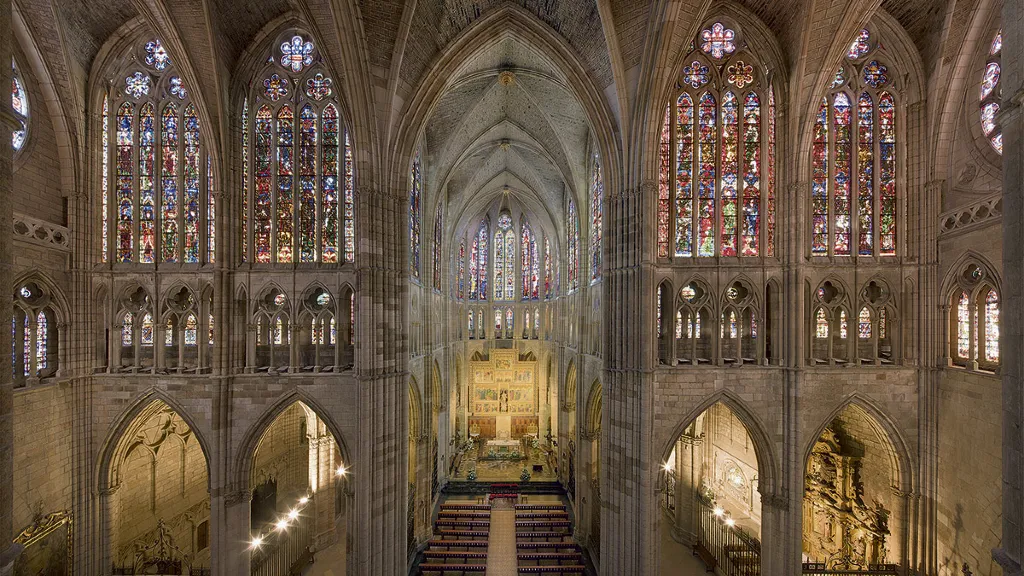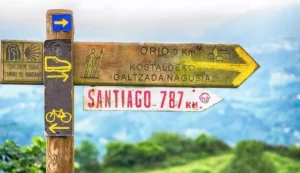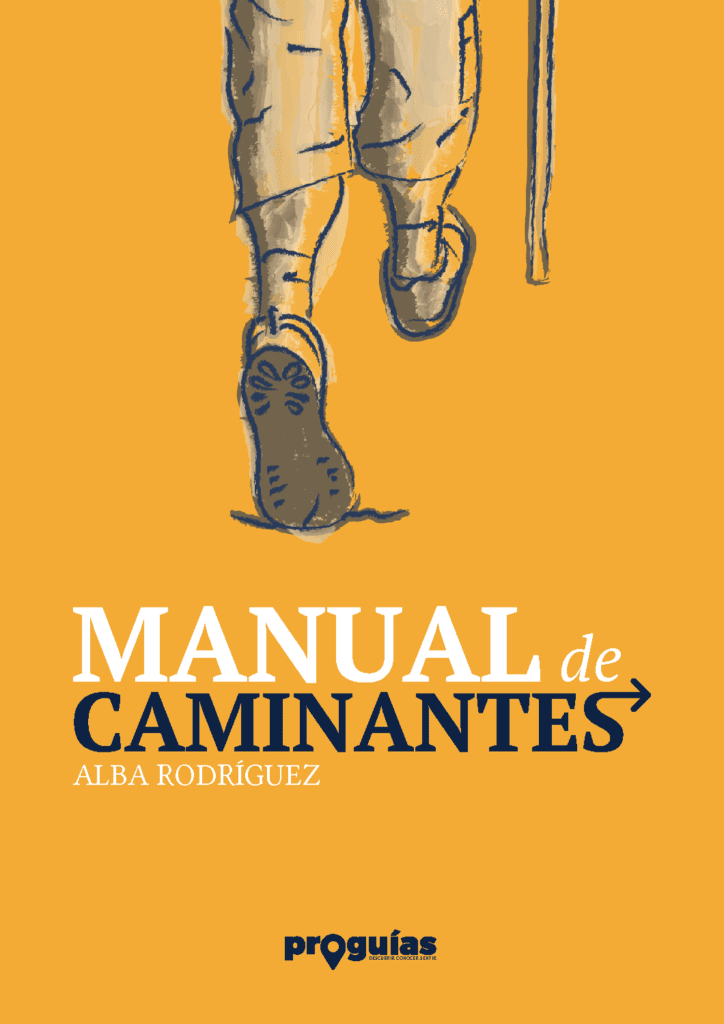One of the great reasons to do the French Way of St. James is its impressive monumental heritage. We are talking about several World Heritage cities and an endless number of places of interest that turn this route into a huge open-air museum. Here we are going to highlight just 25 of them, in a quick overview. The 25 monuments of the French Way of Saint James that have had the greatest impact on us
Before we begin, a word of warning: this is not a list ordered by importance or preference. We wanted to arrange them geographically, according to their distance to the Compostela goal. So you can get an idea of their distribution and where you can see them, whether you do the French Way in one go or not. if you divide it by tranches.
1. Royal Collegiate Church of Santa María
? Orreaga/Roncesvalles - Navarre
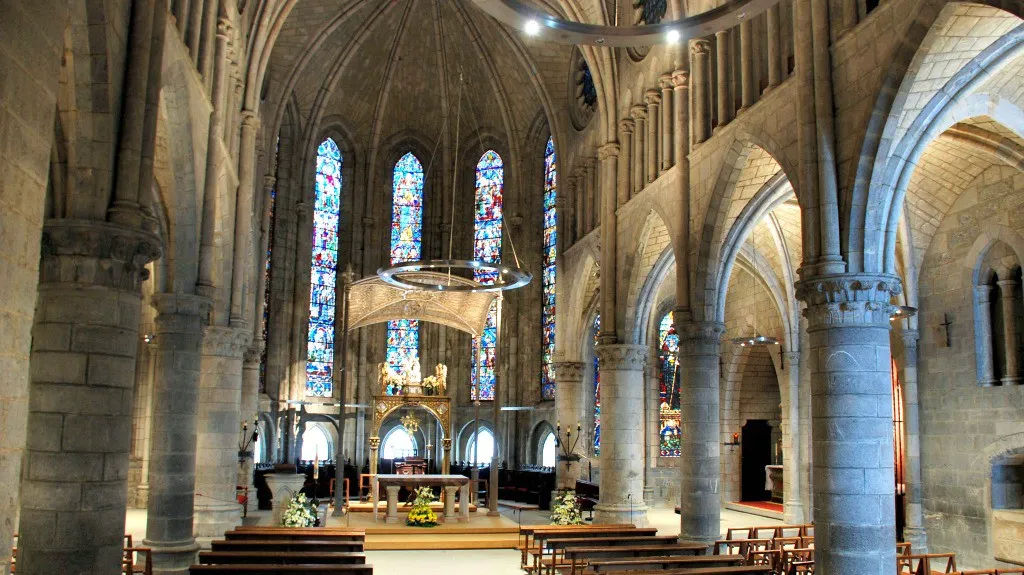
We begin in the tiny village of Roncesvalles (Orreaga in Basque), one of the most important points on the French Way due to the large number of pilgrims who choose it to begin their journey. Declared a historic-artistic site, among the different elements that make it up is the Collegiate Church of Santa María, built between the 12th and 13th centuries. In its cloister you will find the chapel of San Agustín, where you will find the tomb of King Sancho VII el Fuerte - who was King of Navarre between 1160 and 1234.
2. Church of Santa María de Eunate
? Muruzábal - Navarre
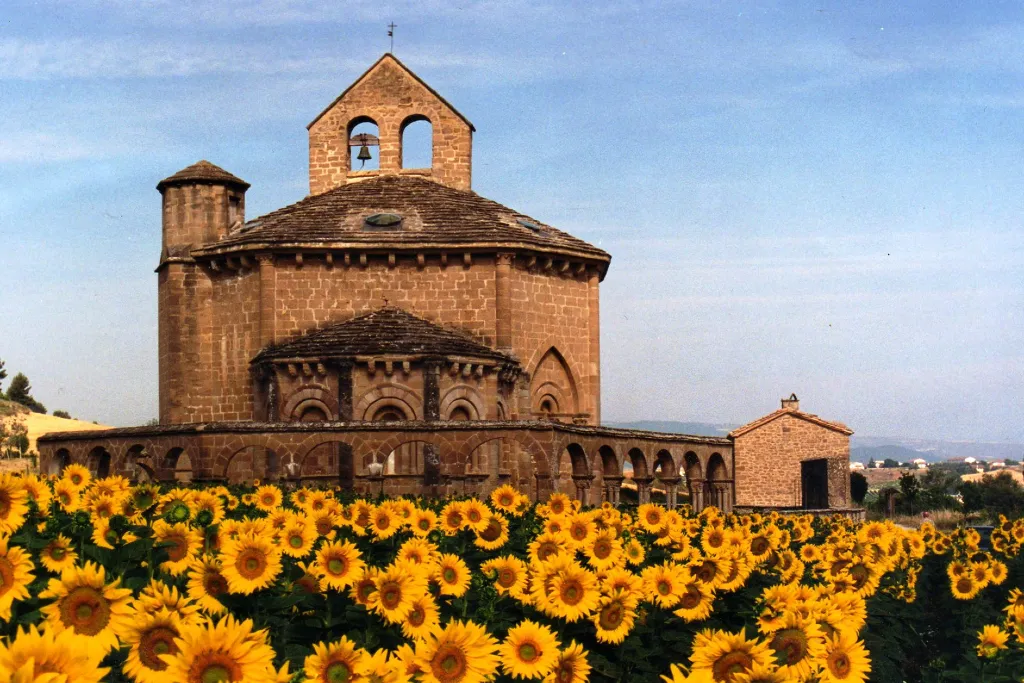
We begin with a suggestive Romanesque church. Its octagonal floor plan and the beautiful porticoed gallery of 33 arches that surround it make it an absolutely unique space. However, it is not exactly at the foot of the most usual route of the Way if you come from Saint-Jean Pied-de-Port or from Roncesvalles. To get there you will have to take a detour that starts in Muruzábal and goes directly to this church, continuing from there towards Obanos along the route known as the French Somport Way or Aragonese Way.
3. St Mary's Cathedral
? Iruña / Pamplona - Navarre
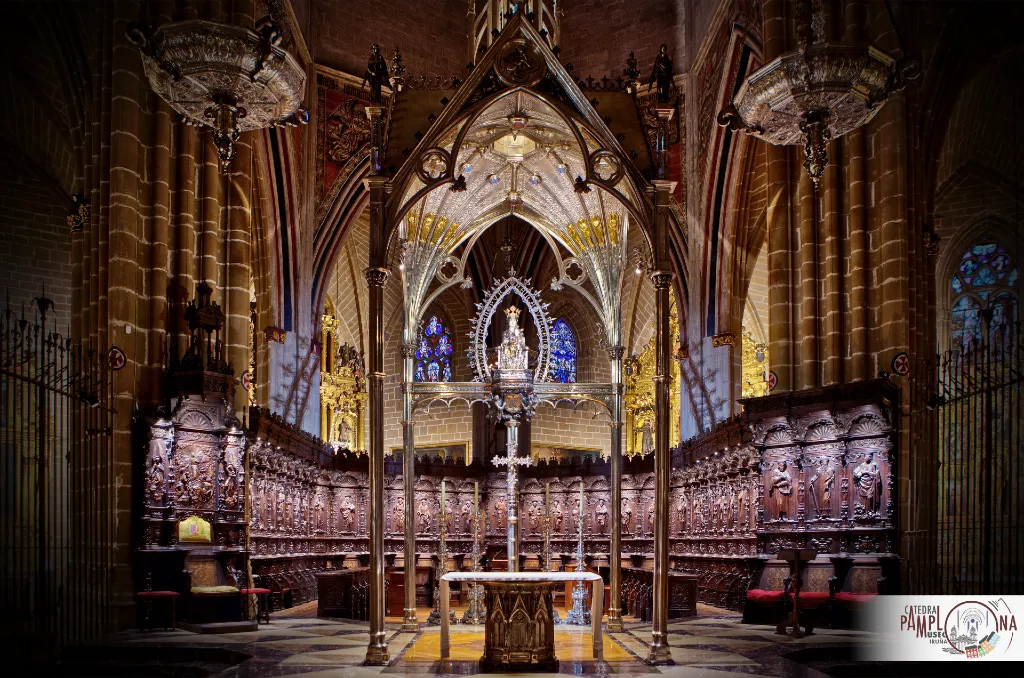
It is probably not the best known spot in a city whose Sanfermines have brought worldwide fame to the Town Hall Square or to streets such as Estafeta. However, it is the most closely linked to the Pilgrim's Way to Santiago de Compostela. Its neoclassical façade contrasts with its Gothic interior, where you can find the mausoleum of King Carlos III and Queen Leonor de Trastámara. The main jewel, however, is to be found in the cloister, with its two beautiful doors and the Barbazana chapel.
4. Alto del Perdón
? Zarikiegi / Zariquiegui - Navarre
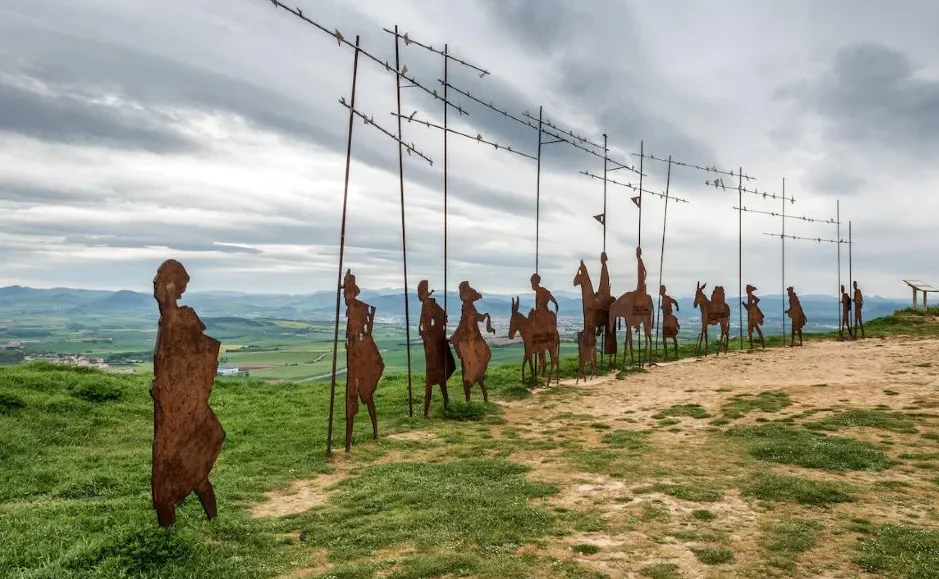
We continue with the list of monuments on the French Way of Saint James by stopping in front of the sculptural group by the artist Vicente Galbete which, since 1996, has crowned the iconic Alto del Perdón between the Navarrese towns of Zarikiegi and Uterga. It is said that "the path of the wind crosses the path of the stars". The ironwork represents a retinue of pilgrims. If you look at the figures, you will see that they correspond to different periods.
5. The bridge over the river Arga
? Puente la Reina / Gares - Navarre
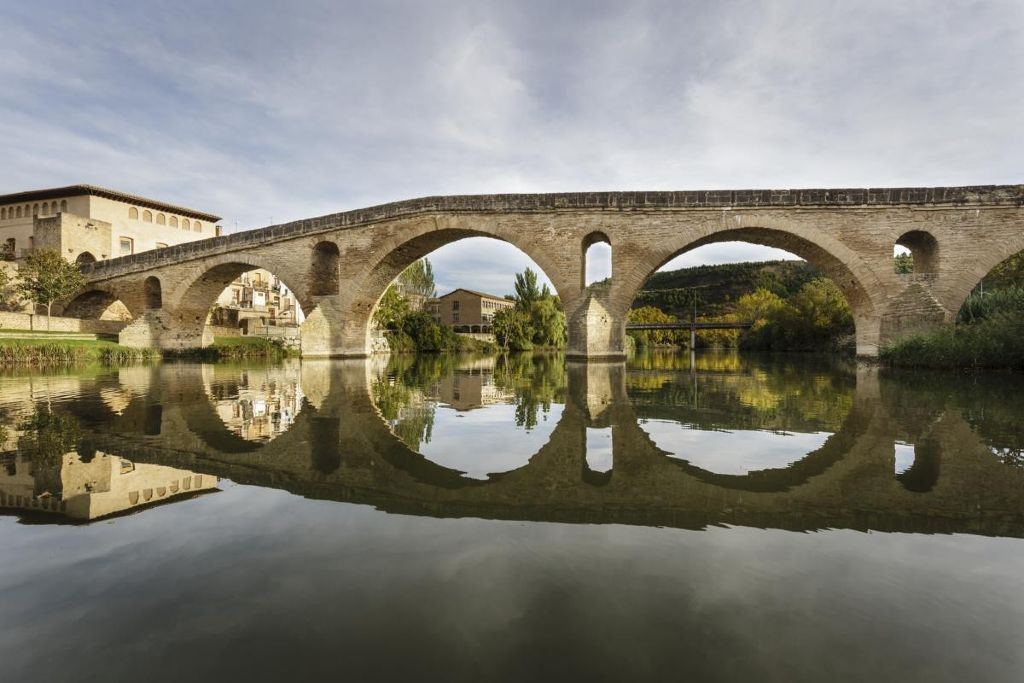
This imposing Romanesque bridge, built in the 11th century, shows 6 of its 7 arches (the easternmost is still underground) and has been a key infrastructure for the Pilgrims' Route to Santiago de Compostela and for the economy of the area since the Middle Ages. Its importance is such that it has given its name to the town of Puente la Reina itself.
If you are wondering which queen it refers to, the truth is that there is controversy. Some authors believe that it refers to Doña Mayor, who was the wife of Sancho el Mayor of Navarre. Others believe it refers to Doña Estefanía, wife of García Sánchez III of Navarre. Whatever the case, the bridge may be the main landmark, but the whole village deserves to be explored at leisure.
6. Church of San Pedro de la Rúa
? Estella / Lizarra - Navarre
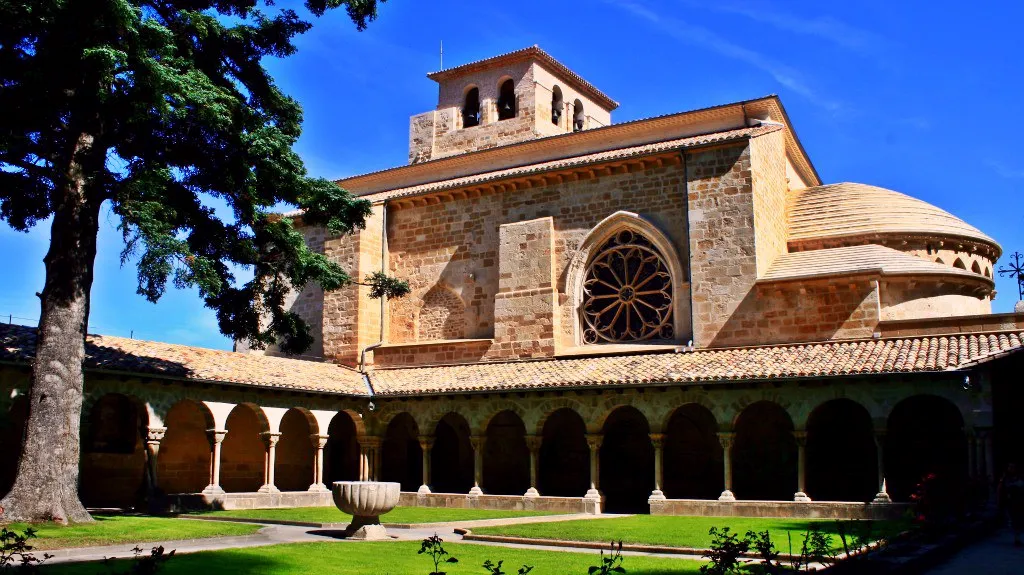
We continue in Navarre in this list of monuments on the French Pilgrim's Way to Santiago de Compostela, stopping in another of those emblematic towns both for the Pilgrim's Way itself and for the history of the Kingdom of Navarre: Estella (in Basque, Lizarra). Here you will find several temples that are well worth visiting, but if we have to highlight one, we would choose San Pedro de la Rúa, built from the 12th century onwards and considered one of the richest sculptural ensembles of the Navarrese Romanesque style. This is despite the fact that the renovations to the church have only left us with the north and west galleries and the portico.
7. Monastery of Iratxe
? Ayegui / Aiegi - Navarre
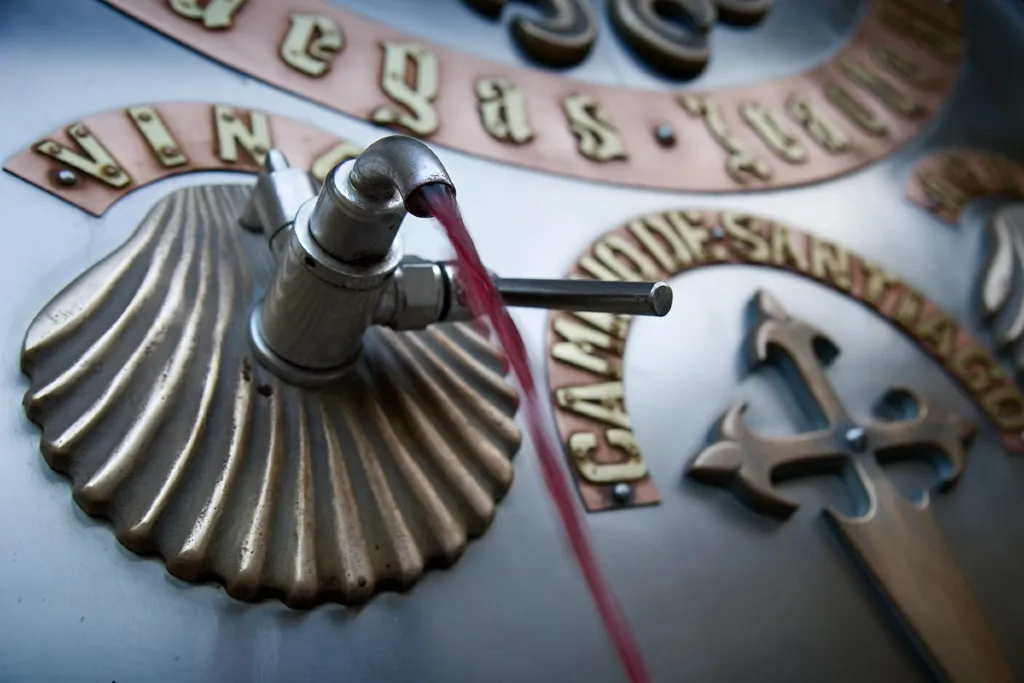
Leaving the town of Ayegui (Aiegi in Basque) and before reaching Irache (Iratxe), the Way passes one of the monuments most celebrated by pilgrims in this part of Navarre: the monastery of Santa María la Real. It was the first pilgrims' hospital in Navarre, and is notable for its Romanesque church and its entrances: the door of San Pedro, which leads to the church itself, and the Puerta Preciosa, which leads to a beautiful Plateresque cloister. However, perhaps the most famous feature of the complex is the wine fountain, which the monks used to offer to pilgrims as a restorative drink, and which continues to flow today.
8. Church of the Holy Sepulchre
? Torres del Río - Navarre
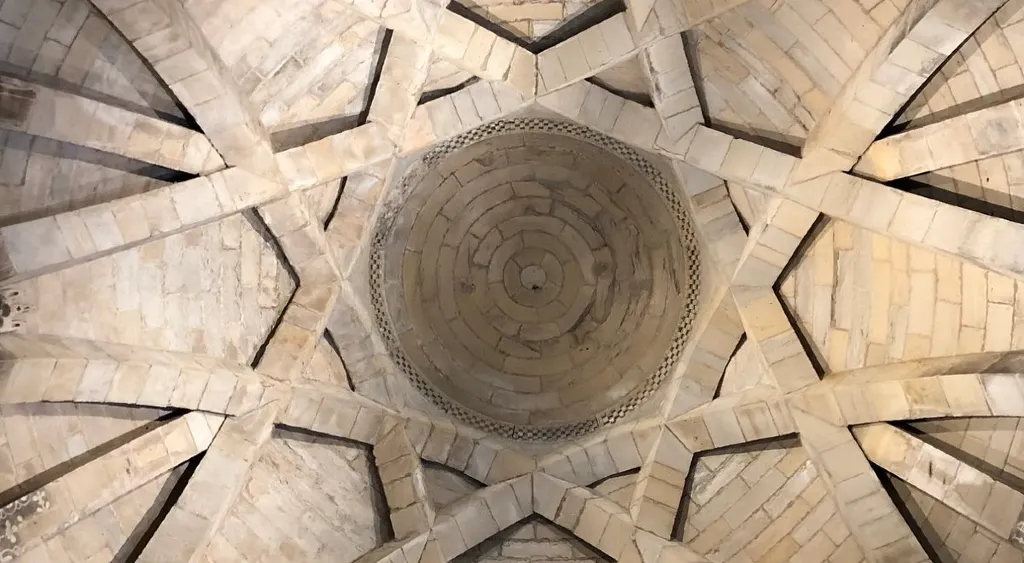
Another example of an octagonal temple and another Romanesque jewel (12th century). Its sobriety allows us to appreciate the harmony of its architecture, where the dome with eight thick ribs forming an eight-pointed star immediately reminiscent of the ornamentation of some mosques stands out. The 13th-century image of Christ, which presides over the apse, also stands out.
9. Church of Santa Maria
? Viana - Navarra
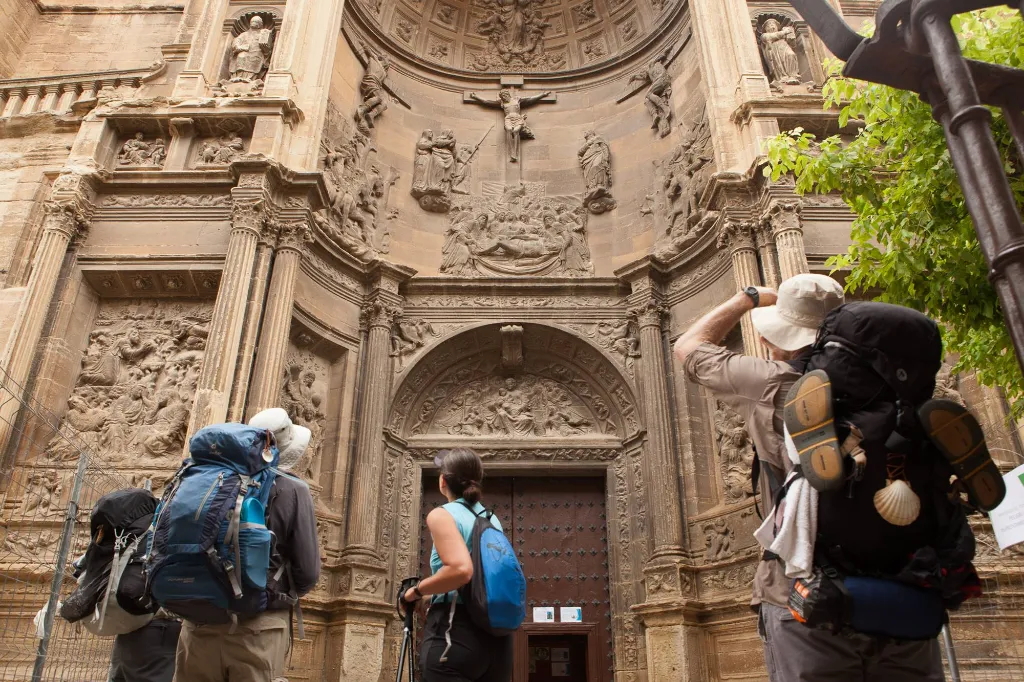
The most outstanding feature of this temple is undoubtedly its magnificent Renaissance doorway, from the 16th century, in the form of a large niche. Inside, it has three naves, side chapels and a choir loft, which gives an idea of the importance of the church itself. In front of the door, there is also a slab indicating the remains of César Borgia, who was general of the Pontifical and Navarrese armies, and whose life has given rise to a good number of works, both academic and novelistic.
10. The game of the Goose
? Logroño - La Rioja
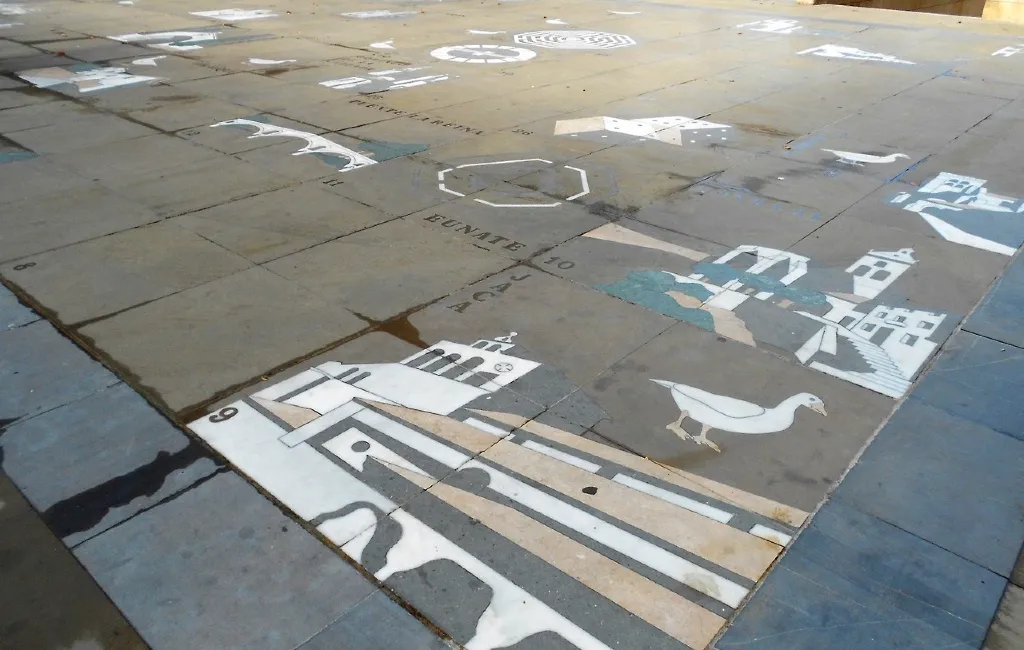
We now leave Navarre and continue this tour of the most outstanding monuments on the Pilgrims' Route to Santiago de Compostela by entering La Rioja, a land of spectacular wines (but not only). First stop in its interesting capital and, specifically, in the church of Santiago, which stands next to the imposing bridge that crosses the river Ebro. Next to the church you will find a human-sized goose game, whose squares are decorated with Jacobean motifs. And this is no coincidence: for some authors, the very The game of the goose is an allegory of the Way of Saint James.
11. Ruins of the Hospital of San Juan de Acre
? Navarrete - La Rioja
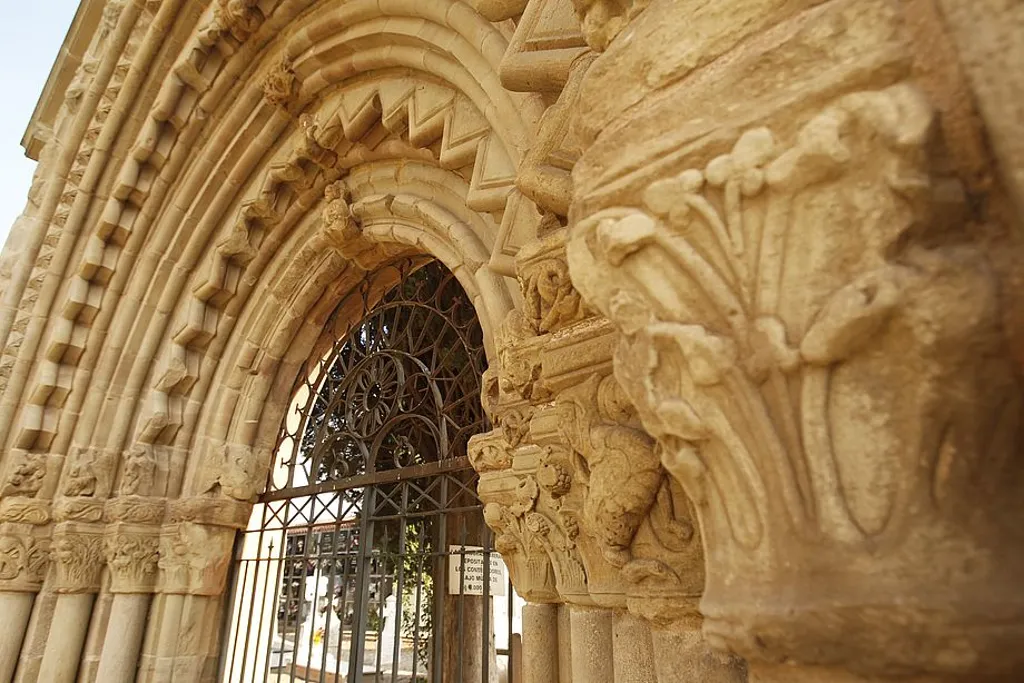
The hospital of San Juan de Acre was founded in the 12th century and served as one of the main points of assistance for pilgrims along the Pilgrim's Way. The building went into absolute decline after the disentailments of the first half of the 19th century, and today we only conserve its façade, which was moved stone by stone to serve as the entrance to the cemetery of the town of Navarrete, and the bases of the walls of its chancel.
12. Monastery of Santa María la Real
? Nájera - La Rioja
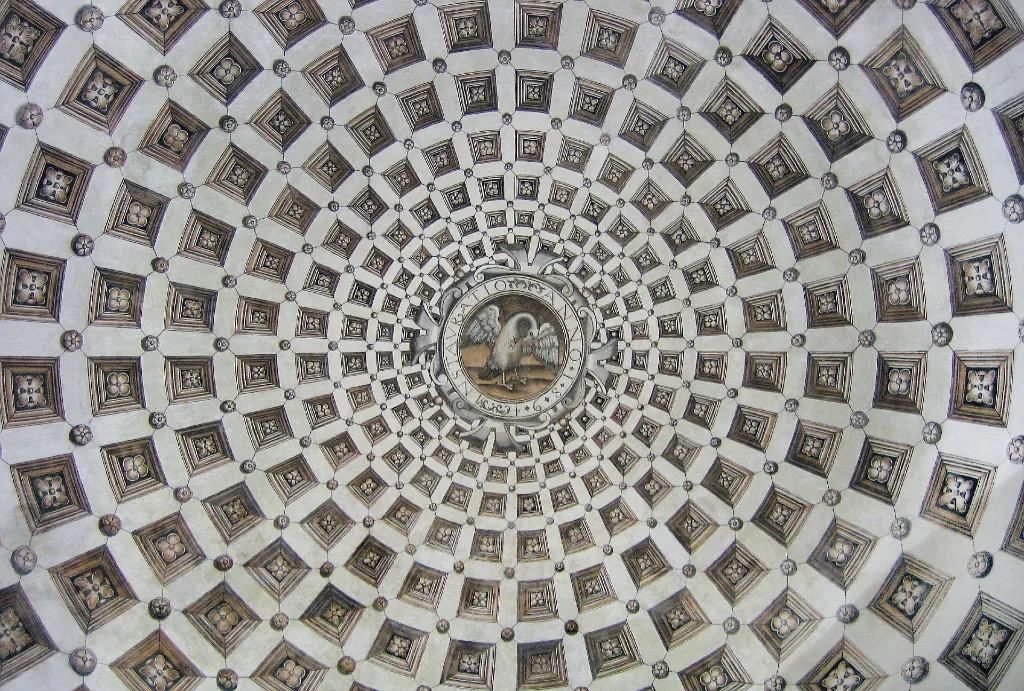
Founded in the 11th century by the Navarrese king Don García III, known as "he of Nájera", this monastery was built to keep an image of the Virgin Mary that García III himself discovered in 1044 in a cave while hunting. According to legend, he also found a bell and a bunch of lilies, which became the symbol of the monastery. Today, the building also houses the Royal Pantheon, with 12 tombs of members of the royal family of the kingdom of Nájera-Pamplona, the predecessor of the better-known Kingdom of Navarre.
13. Cathedral of the Saviour
? Santo Domingo de la Calzada - La Rioja
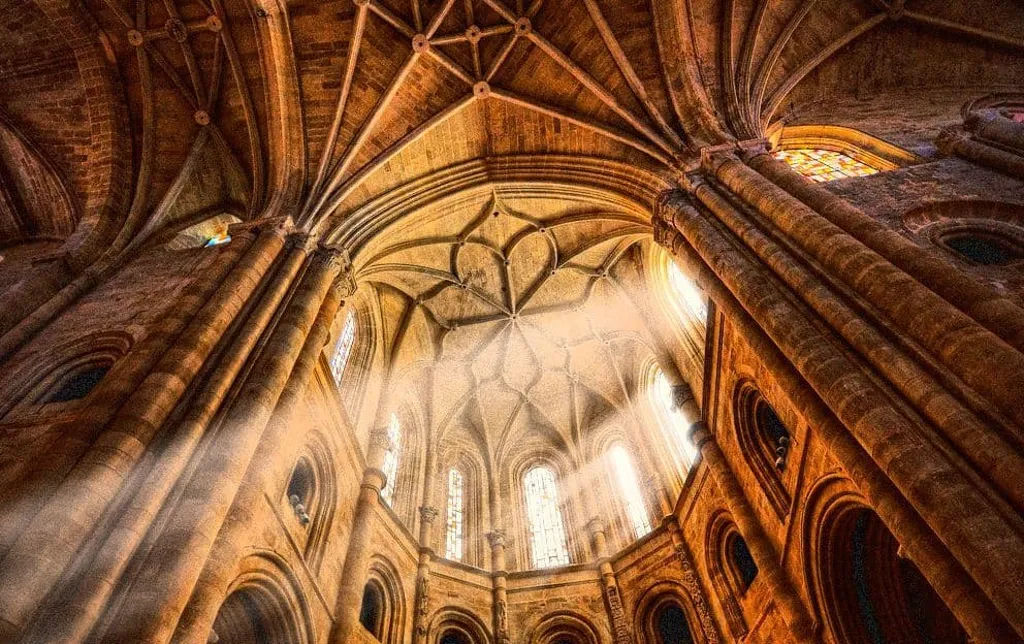
Founded in the 11th century by Domingo García, the present-day town of Santo Domingo de la Calzada has important Jacobean landmarks, such as the old pilgrims' hospital, now a Parador hotel, and the Cathedral of El Salvador, which is the element we would like to highlight in this list of monuments on the Pilgrim's Way to Santiago de Compostela. Of proto-Gothic architecture, the interior is notable for the henhouse, where a cockerel and a hen live in memory of the miracle of the hanged pilgrim.
14. Monastery of Santa María la Real de las Huelgas
? Burgos - Castilla y León
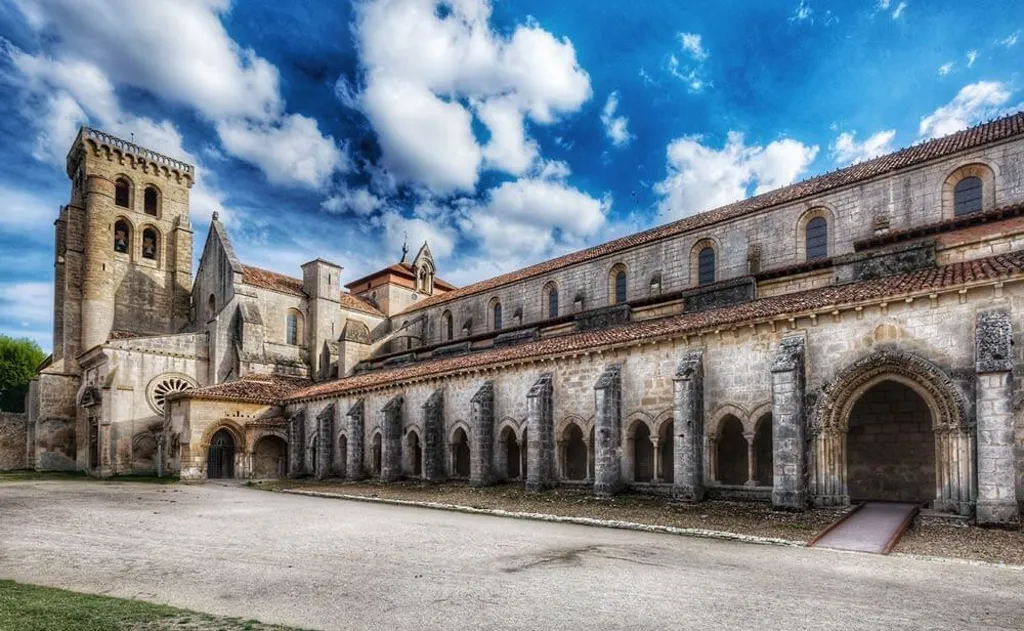
Without a doubt, the whole city of Burgos deserves a quiet tour. Its cathedral is one of the jewels of Castilian Gothic architecture. However, in this list of monuments on the Camino de Santiago we would like to highlight a lesser-known landmark: the Cistercian monastery of Santa María la Real de las Huelgas, which is located on the outskirts of the city, surrounded by a crenellated wall. Founded by King Alfonso VIII in 1188 to house Cistercian nuns, it also served as the Royal Pantheon, and contains the Gothic tombs of the king himself and his wife Doña Leonor of Aquitaine, as well as other royal personages linked to the crown of Castile.
15. Collegiate Church of Santa María del Manzano
? Castrojeriz - Castilla y Leon
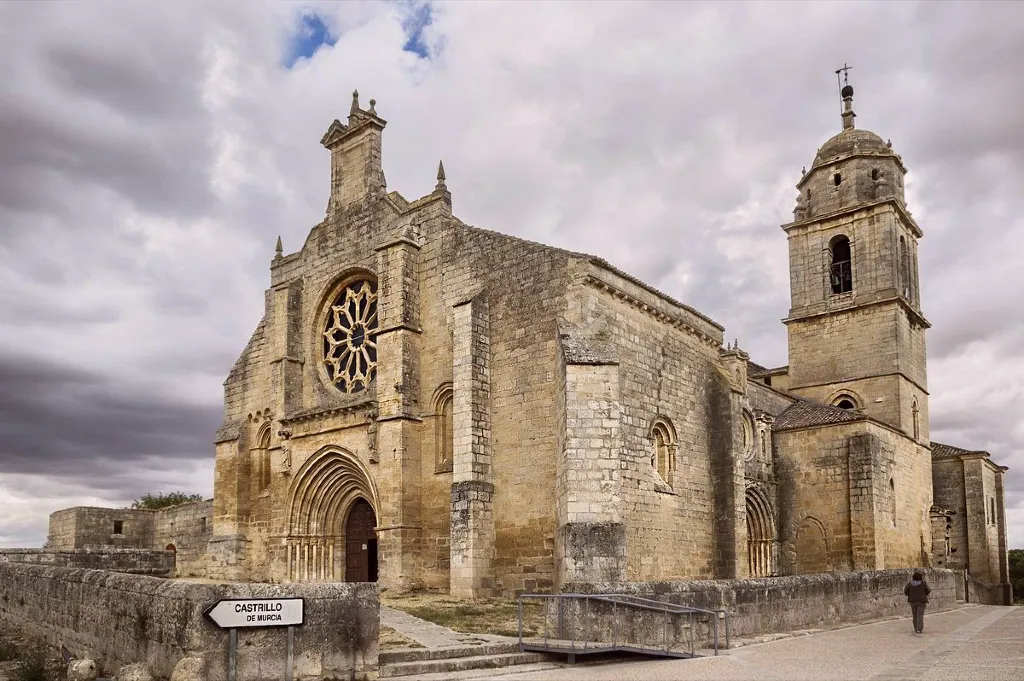
Castrojeriz is a small Castilian village built around the fortress that gives its name to the town. However, perhaps its most important heritage element is the collegiate church of Santa María del Manzano, built in the 13th century and with important modifications in the 17th century. The representation of the Annunciation on its Gothic façade and the paintings by the neoclassical artist Anton Raphael Mengs, who was the chamber painter to King Charles III, are particularly noteworthy.
16. St. Martin's Church
? Frómista - Castilla y León
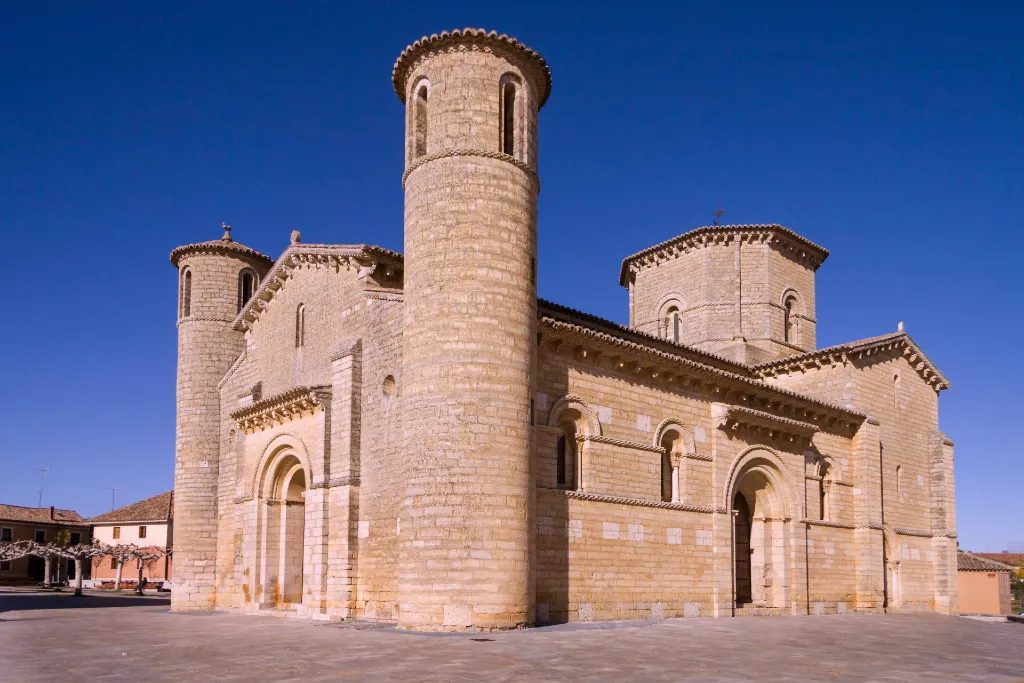
Typologically related to the architectural trends of Jaca, in the Aragonese Pyrenees, this free-standing church was part of a Benedictine monastery founded in 1066 by the Countess Doña Mayor de Castilla. It is currently considered the purest and most representative Romanesque building in the province of Palencia, and is undoubtedly one of the most important Romanesque buildings in the whole peninsula.
17. Collegiate Church of Santa María la Blanca
? Villalcázar de Sirga - Castilla y León
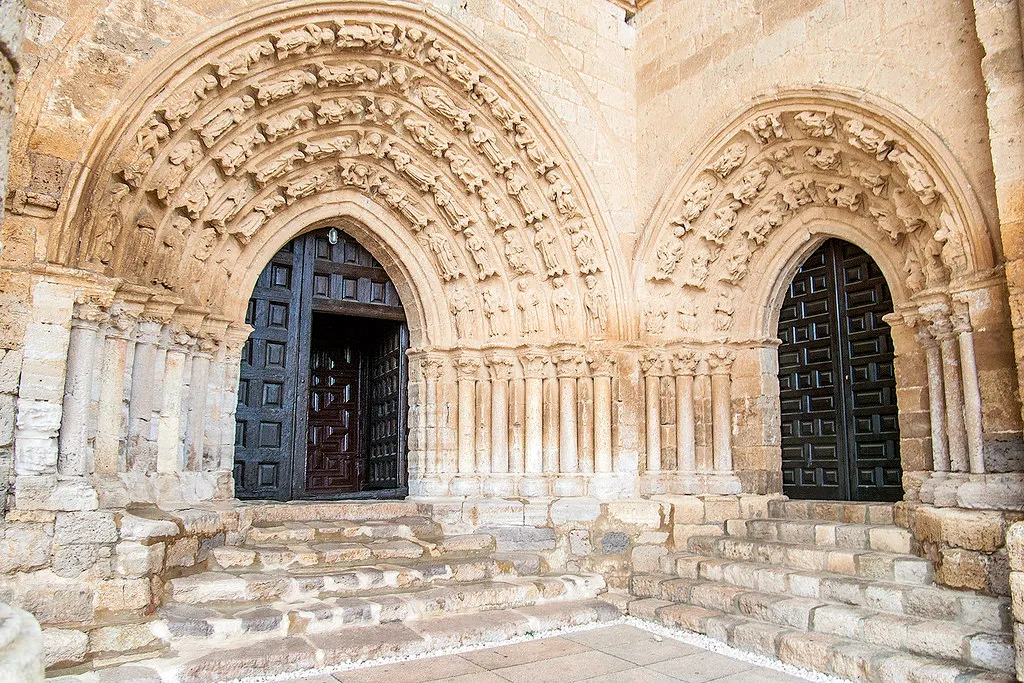
Another imposing rural church, which in this case owes its origin to an order of the Order of the Temple for the protection of pilgrims and travellers. Its three naves and five apses compete in the interior with the doorways and sculptures of its south door. However, there is one element that stands out from the rest: the altarpiece with the seated image of the so-called White Virgin, to whom King Alfonso X the Wise dedicated part of his Cantigas written in Galician-Portuguese in the 13th century.
18. Royal Monastery of San Zoilo
? Carrión de los Condes - Castilla y León
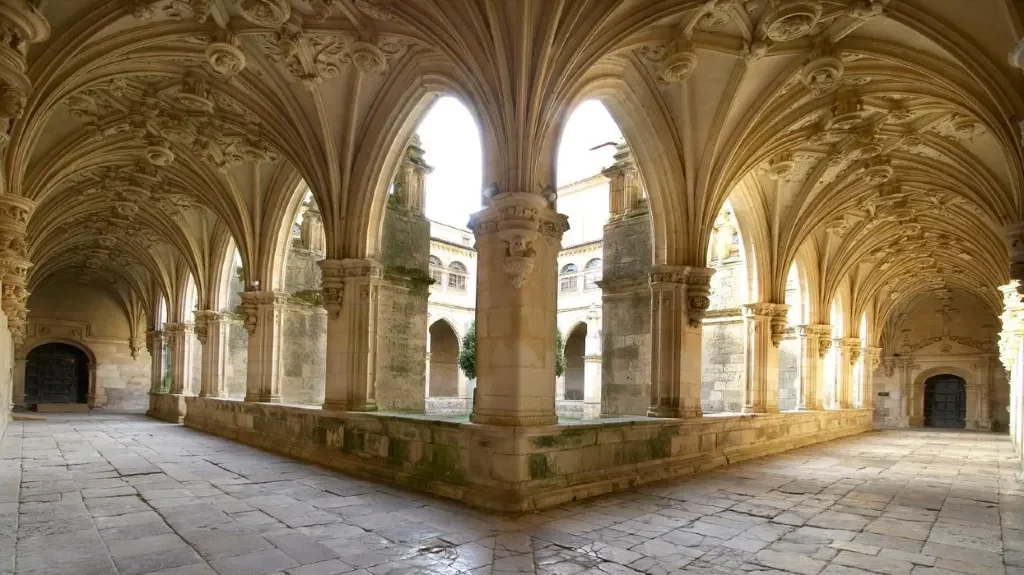
As with the example of Irache / Iratxe, this Cluniac monastery built from the 11th century onwards has, from its origins, a special link with the Pilgrim's Way to Santiago: one of the main hospitals on the Pilgrim's Way was located here. Today it serves as accommodation and also houses some royal tombs, such as those of the Infantes de Carrión. Perhaps the most outstanding feature is its Plateresque cloister.
19. Cathedral of Santa María de la Regla
? Leon - Castilla y León
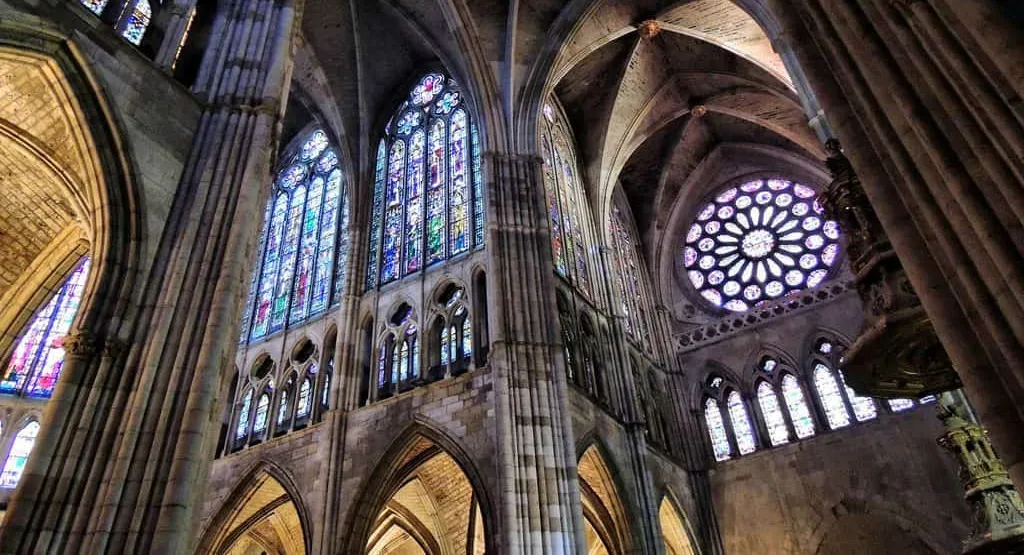
This is one of the most perfect examples of the importance of light in Gothic architecture. The refined lines of its stonework, which tend to rise up in search of the sky, are combined with 1,756 square metres of stained glass windows and make León Cathedral one of the most beautiful on the Iberian Peninsula. It is so on the outside and it is undoubtedly so on the inside, where the light that floods everything generates one of the greatest visual spectacles of all the heritage of the Pilgrim's Way to Santiago de Compostela.
20. Gaudí Palace
? Astorga - Castilla y León
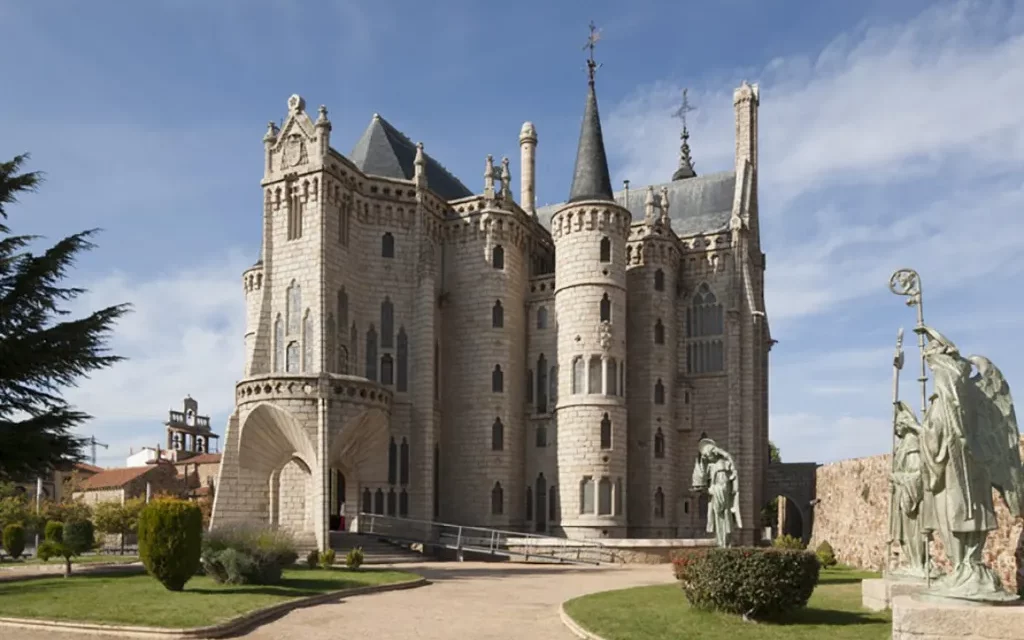
Romanesque and Gothic architecture is not the only thing on this list of monuments on the Pilgrims' Route to Santiago de Compostela. In Astorga, just a few metres from the medieval cathedral, the Episcopal Palace, the work of the brilliant Catalan architect Antoni Gaudí, stands out with its own voice. Designed after the fire that destroyed the old palace in 1886, modernism here adopts a neo-Gothic formula that combines, in a single body, a stately mansion, a castle and a temple.
21. Templar Castle
? Ponferrada - Castile and Leon
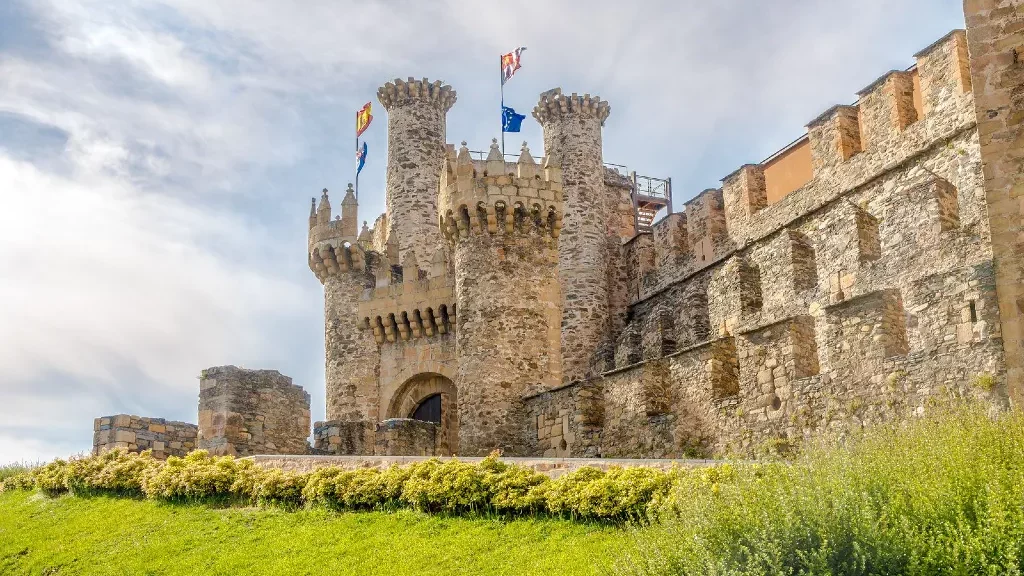
In 1185, King Ferdinand II of León repopulated the town of Ponferrada and donated it to the Order of the Temple, which built the castle that today bears its name on the site of an ancient Roman fortress. The Knights Templar were expelled in 1312, but the castle remained and was even enlarged on several occasions until the 19th century, giving rise to its current irregular layout.
22. Church of Santiago
? Villafranca del Bierzo - Castilla y León
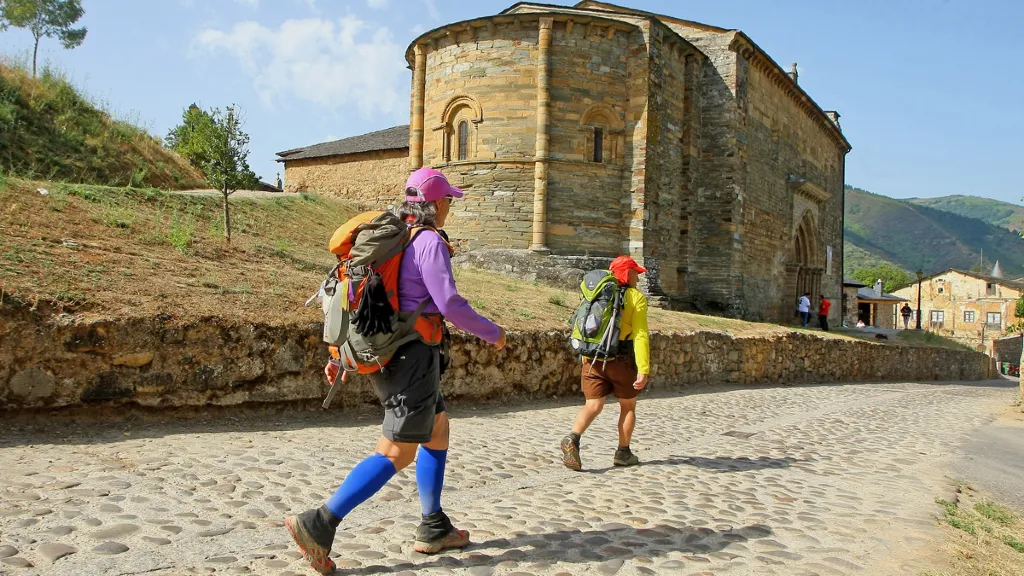
At the entrance to Villafranca del Bierzo stands the church of Santiago, a 12th century Romanesque temple that has been seeing pilgrims pass before it ever since. But this church has something special: a side door called Puerta del Perdón (Door of Forgiveness). Thanks to a privilege granted in the 15th century by Pope Calixtus III, pilgrims who for health reasons were prevented from reaching Compostela could obtain the same indulgences as at the tomb of the apostle by simply passing through that door. Fortunately, today that door remains closed and almost all pilgrims on the Camino de Santiago reach their destination without major complications.
23. Sanctuary of Santa María la Real de O Cebreiro
? Pedrafita do Cebreiro - Galicia
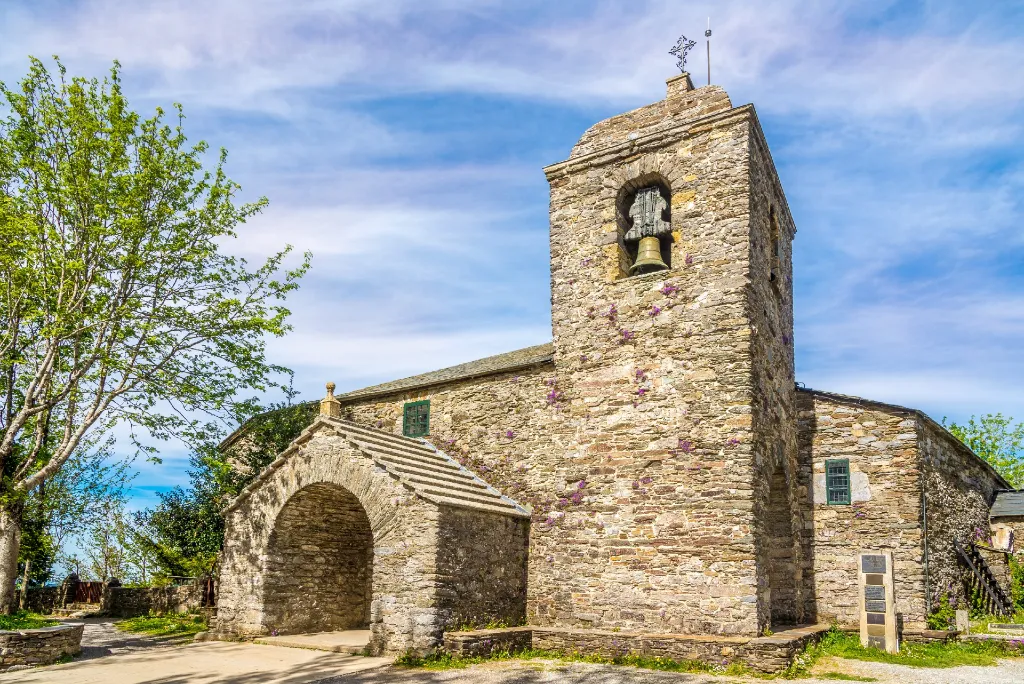
In the mountains of Os Ancares, which separate Galicia from the Bierzo region, lies the tiny village of O Cebreiro, famous for its popular architecture. In addition to the pallozasThe main reference point is the pre-Romanesque church built in the 9th century, practically intact and dedicated to Santa María. According to tradition, this is where the the miracle of the Grailwhose history spread rapidly throughout Europe thanks to the pilgrims who returned home at the end of their pilgrimages.
24. Samos Abbey
? Samos - Galicia
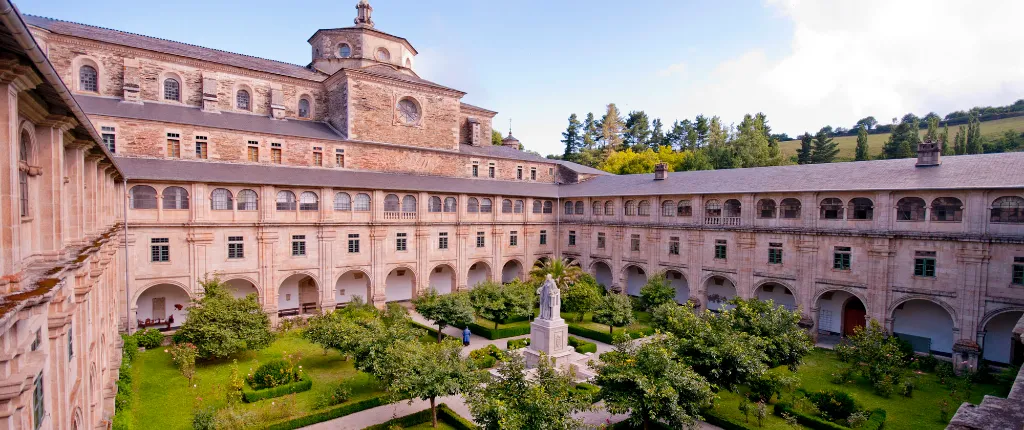
Although nowadays most pilgrims take the stage from Triacastela to Sarria via San Xil, to shorten the kilometres, the alternative of Samos, more common in the Middle Ages, continues to attract a good number of walkers who come to see one of the oldest monastic complexes in the peninsula. The current abbey has its roots in the 6th century, although alterations have given it a new Renaissance and Baroque face. Its two cloisters stand out: the smaller or Nereids' cloister has a central fountain. The larger one, precisely because of its size. It is one of the largest in Europe.
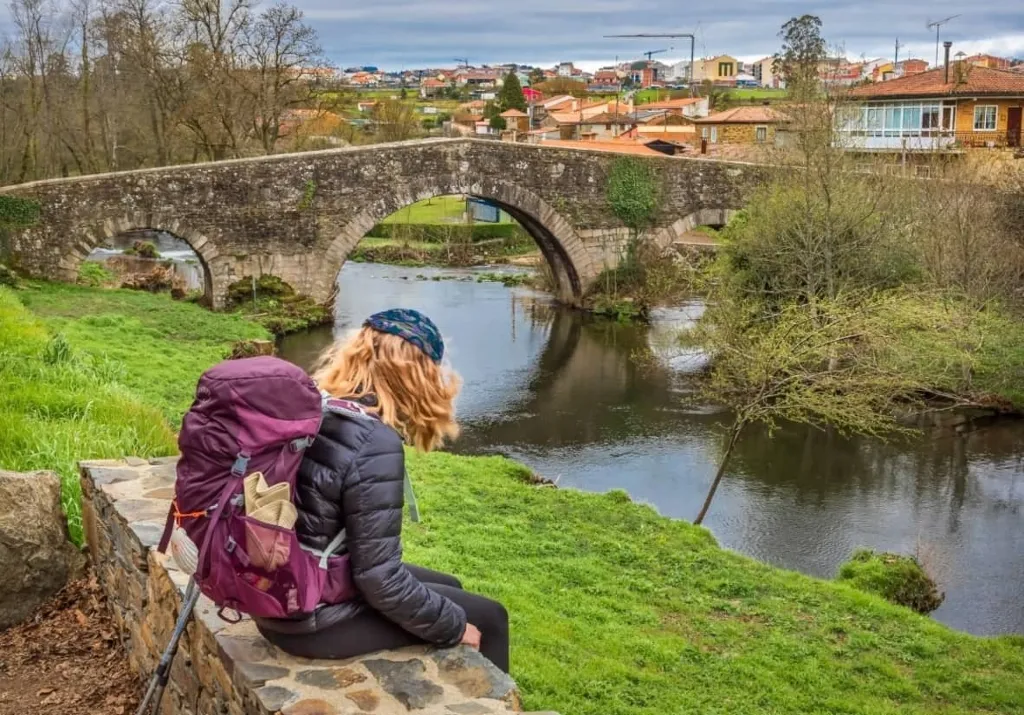
for the Sarria-Santiago section
25. Santiago Cathedral
? Santiago de Compostela - Galicia
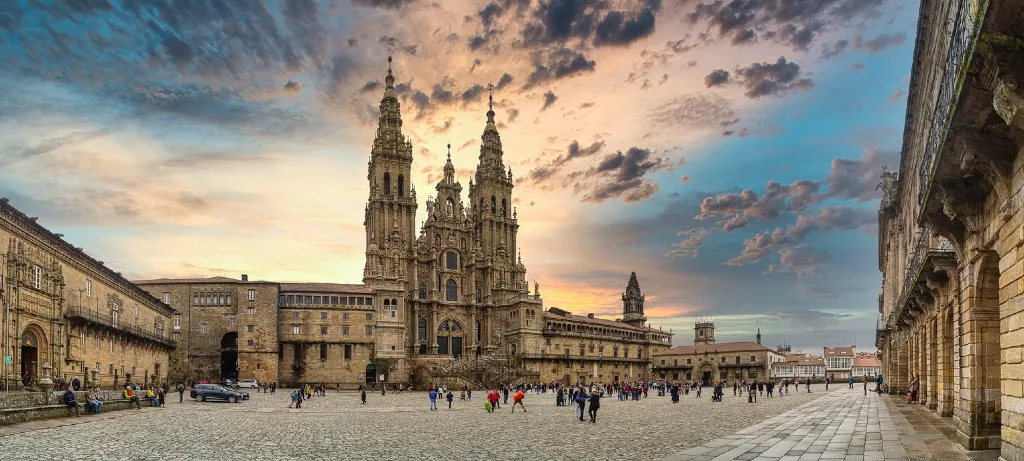
Obvious, right? Santiago de Compostela has an endless number of places of interest, but a list of the 25 most outstanding monuments on the Way of St. James could not miss the goal of every pilgrim: the Cathedral of Santiago (officially Santa Apostolica Metropolitana Iglesia de Santiago). Built in 1075, its Romanesque interior contrasts with the imposing Baroque façade of the Plaza del Obradoiro, which masks the Pórtico de la Gloria by Maestro Mateo.


